Your cart is currently empty!
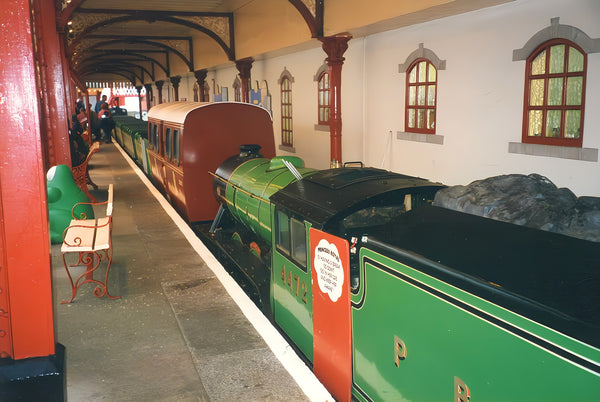
Pleasure Beach Express, Blackpool
During the late-1920s, Hudswell, Clarke & Co. Ltd, a leading industrial locomotive builder based in Leeds, saw a downtown in business due to the recession. So they turned their attention to pleasure railways, drawing up designs for diesels that looked like steam engines. They believed the savings in labour and maintenance costs would surely prove appealing to operators, and it did.
The first one went to the North Bay Railway in Scarborough in 1931 and over the next seven years they built 8 more. Some went on to lead relatively stable lives, whilst others had several different homes. Two even ended up in a scrapyard. But astonishingly, all 9 still survive today.
We’ll be taking a look at all these locos in due course and in this particular article we’ll focus on the three that went to Blackpool Pleasure Beach.
To read more on what happened to the other Hudswell Clarke steam-outline locos see our blogs on the Golden Acre Park Railway and Butlins Miniature Railways
The first miniature railway at Blackpool Pleasure Beach opened in 1905 using a 15″ gauge steam loco built by Bassett-Lowke and named ‘Little Giant’. The main station was called ‘Gipsyville’ and was located just south of the River Caves. The railway ran for 5 years and closed at the end of 1909 due to redevelopment of the site. The railway moved to Halifax Zoo in 1910 where the loco was renamed ‘Little Elephant’.
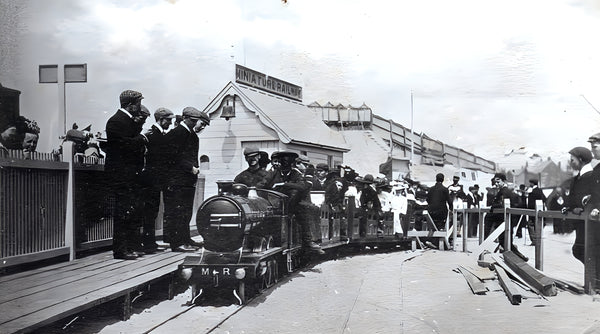
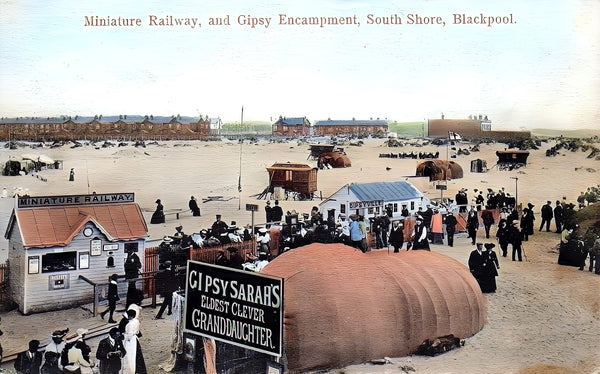
The Pleasure Beach Express
After a gap of 24 years, a miniature railway returned to the South Shore in the shape of a new line built with two of the Hudswell Clarke steam-outline locos. For reasons nobody can explain, the Blackpool line was built to 21″ gauge, unlike the 20″ gauge of Scarborough and Golden Acre Park.
The two Blackpool locos were named Mary Louise and Carol Jean, after the daughters of park owner Leonard Thompson. Mary Louise was another ‘Flying Scotsman’, identical to all the others, and Carol Jean was another tank engine, identical to Robin Hood at Golden Acre.

They arrived in May 1933 after an 8-hour road trip from Leeds “The roads are not too good, very hilly, but everything went like clockwork” said Mr Clayton, MD of Hudswell Clarke. A local reporter described the scene when they arrived:
The minute the great L.M.S. wagons rumbled up Watson’s road, people came like flies round a honeypot. Old men and young men, elderly ladies and young mothers with a group of children, little girls with bunches of buttercups in their hands, and wildly excited little boys. All watched breathlessly, as the shining black and green locomotives, perfect in every detail, were coaxed on to the sloping rails arranged for their descent.
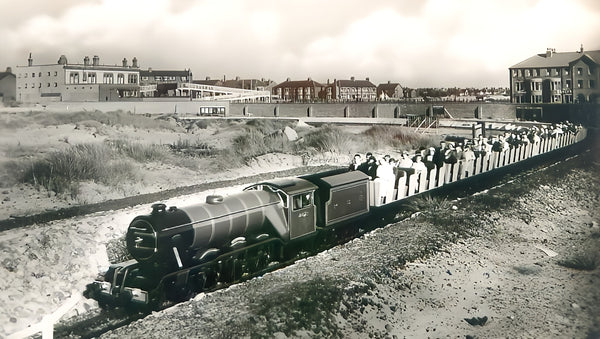

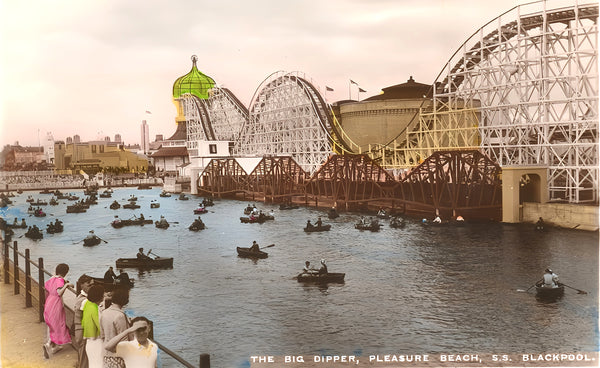
The Forth Bridge next to the Big Dipper. The log flume was later built here, and then the Infusion roller coaster. The bridge is no more, but the track is roughly in the same spot
The big fire
On July 17th 1934 a huge 2-hour thunderstorm ripped through Blackpool with over an inch of rain falling in the first hour. A bus crashed into a sinkhole on Grassmere Road and nearly overturned. Roads were flooded with several feet of water. In the middle of the storm, around 10.30pm, a fire developed at the Pleasure Beach. “Within a few minutes, despite the pouring rain, the flames had shot up fiercely, and soon the whole of that portion of the pleasure beach, including the miniature railway station and workshop, was an inferno of roaring flames.” Fireman did their best to control the fire and apparently emptied all the water from the River Caves and Boating Lake.
Carol Jean was declared a total loss, while Mary Louise was said to be salvageable. The railway remained closed for the rest of that year. In 1935 a new art deco station was built, designed by Jospeh Emberton. Hudswell Clarke delivered a new loco in April to replace Carol Jean – in fact it was going to be called Carol Jean II. But in the end it was named Princess Royal, supposedly after a royal visit to the factory. This new loco was built to a whole new design and based on the LMS ‘Princess’ class.
Surprisingly, the burned remains of Carol Jean were later rebuilt, incorporating lots of new parts, and it was back in service by the late-1950s.
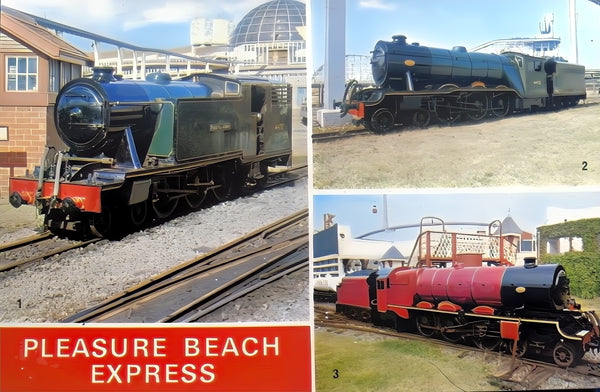
During the 1940s, Pleasure Beach owner Leonard Thompson acquired the closed miniature railway from Golden Acre Park in Leeds. The equipment was stored at the Pleasure Beach until 1953 when it was sent to operate a new railway at Morecambe Pleasure Park, which he also owned. He kept the dining car and some freight wagons for future use as Blackpool. More info on the Morecambe railway can be found in our Golden Acre blog
During the 1970s the Art Deco station was replaced by another built to resemble a typical LMS station of the 1920s. The elaborate steelwork came from an old pavilion on Southport Pier, whilst the booking office, ticket box and other “furniture” are copies of items found on LMS stations around the Fylde area.
In 1982 Alan Keef built a small diesel loco to be used on maintenance trains. In 2001 it was named Barbie, after Barbara Thompson, wife of park owner Geoffrey Thompson. A naming ceremony was held where Mrs Thomspon unveiled the new name. Geoffrey Thompson said: “Our maintenance locomotive plays an important role in the smooth running of the Pleasure Beach Express. We offer our visitors a reliable service even when there are leaves on the line!”.
In 1987 Carol Jean was sent to the Ravenglass & Eskdale Railway for a major refurbishment. Two years later it was the turn of Mary Louise. Both were fitted with new engines. Ravenglass is still involved today with maintenance on the railway.
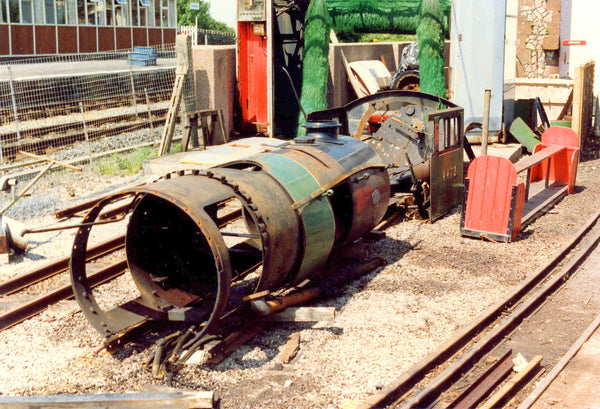
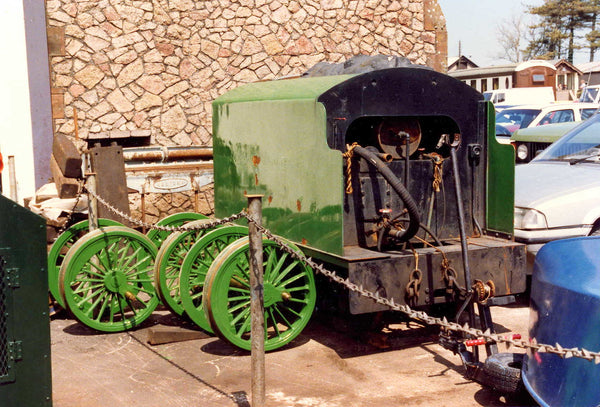
Teddy Askey, known at all as Little Teddy, started work at the Pleasure Beach in 1958 and started driving the trains in 1961. He became a local celebrity and received dozens of Christmas cards every year from visitors that he’d met during the summer. He was awarded an MBE in 1997 and retired in 1999 after driving the trains for 38 years. He died in 2016 aged 83.
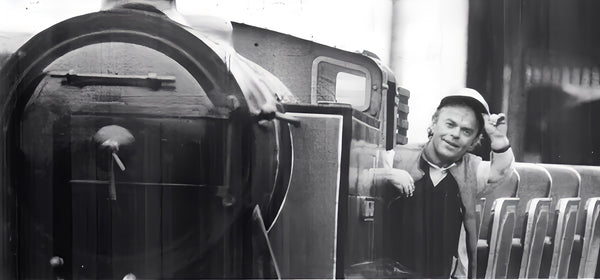
In 2004 the Princess Royal was renamed Geoffrey Thompson OBE.
The Blackpool railway still follows the same basic route that it always has. New rides and attractions have been built around it (and over the top) and parts of the track have been moved a few feet here and there, but the layout is basically the same as was built in the 1930s.
At the end of each season, the railway is used to move the adjacent Big Dipper trains into storage, using a special lifting gantry. The three locos are kept in great condition, and the old dining car from Golden Acre park can often be seen on display.

Mary Louise and the old Golden Acre dining car at Blackpool 1990s

The map above shows the route of the Pleasure Beach Express in green. The pink bits are old sections of track which no longer exist. The section at the bottom was rerouted when the Big One coaster was built in 1994. The tunnel previously used by the railway is now used by the Big One. A new railway tunnel was built next door.

Leave a Reply